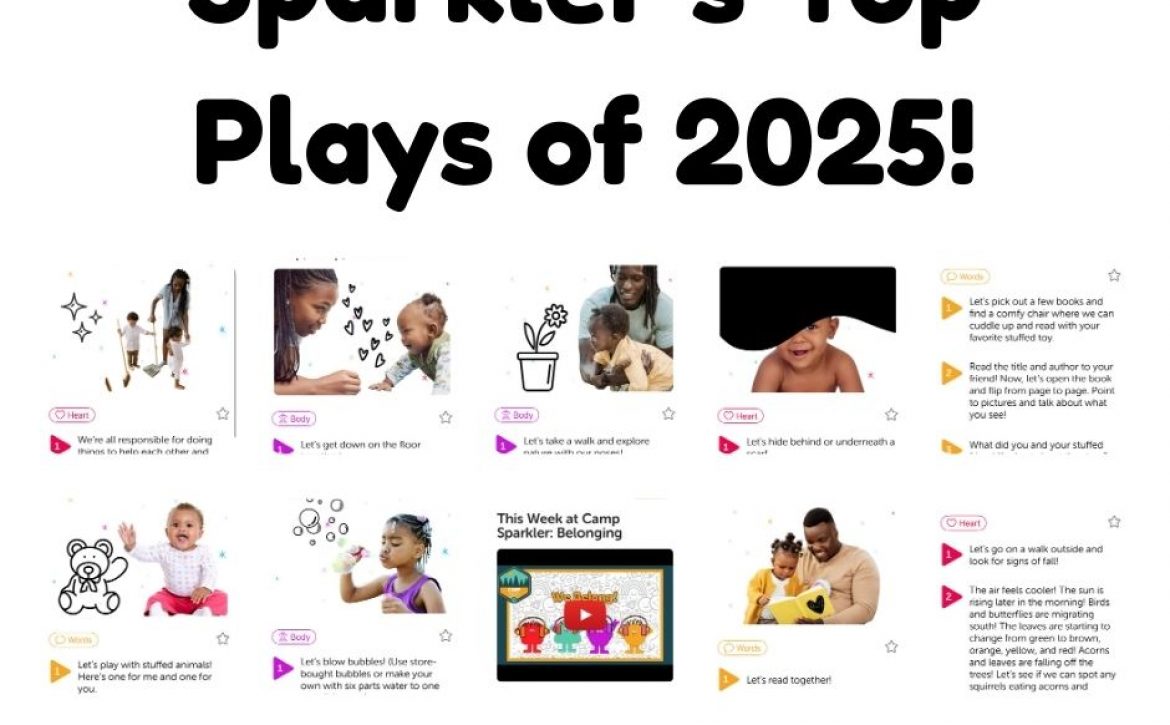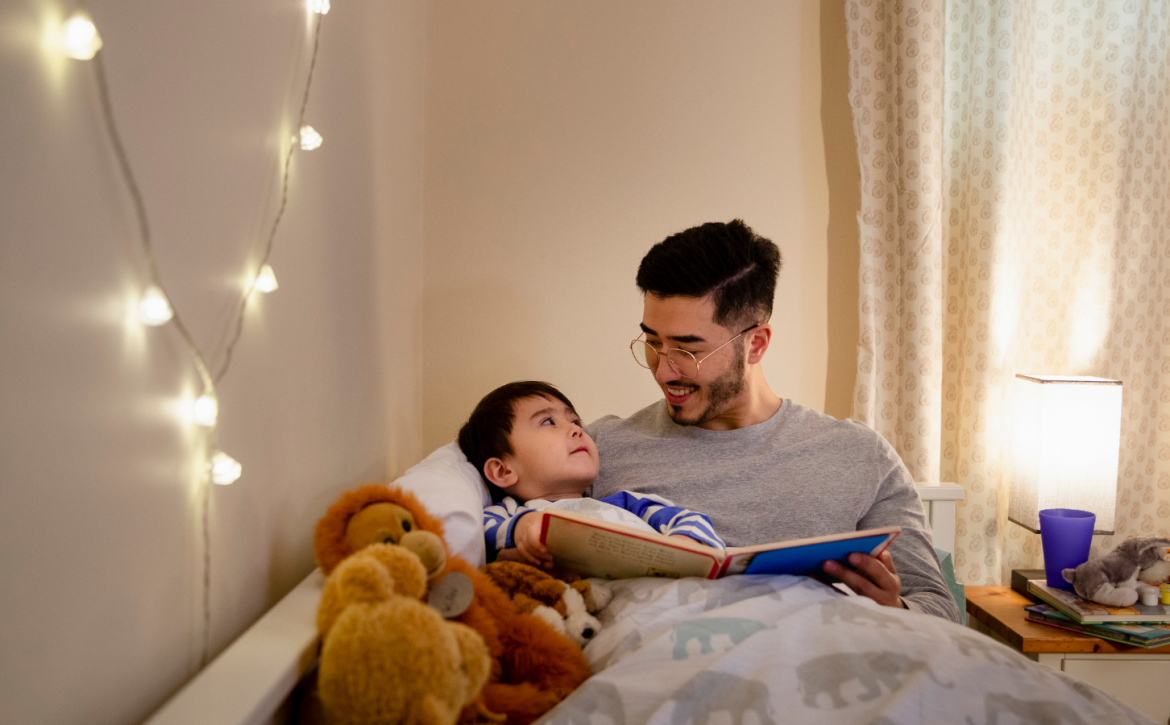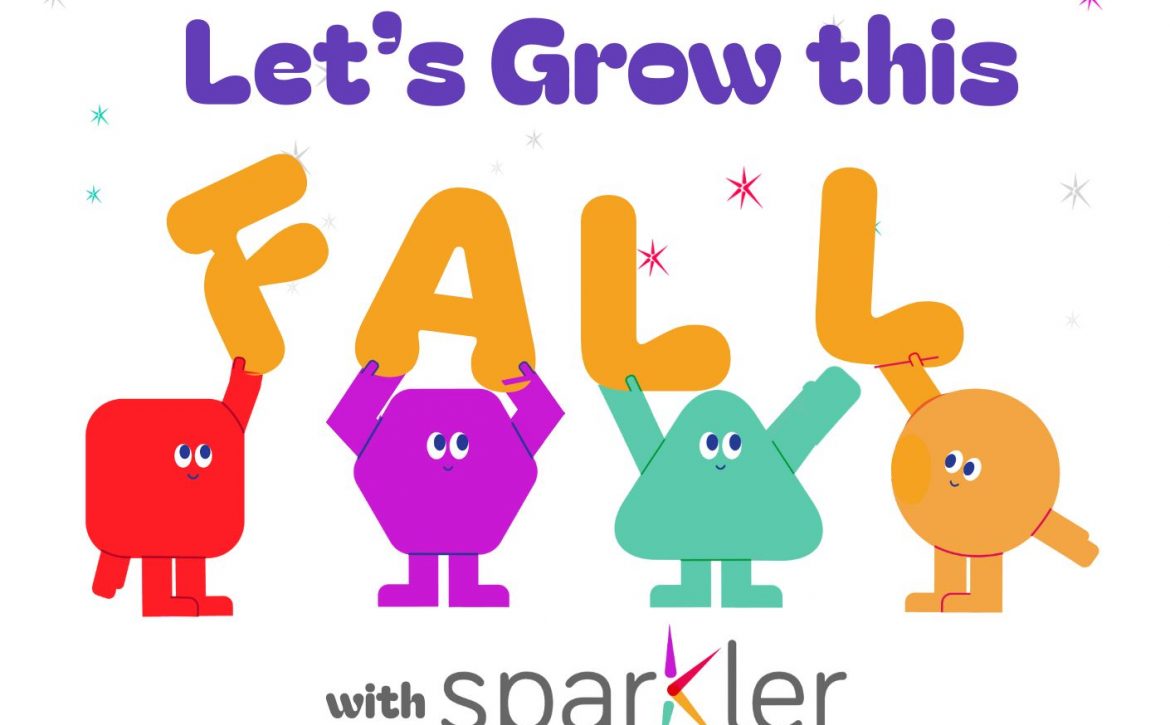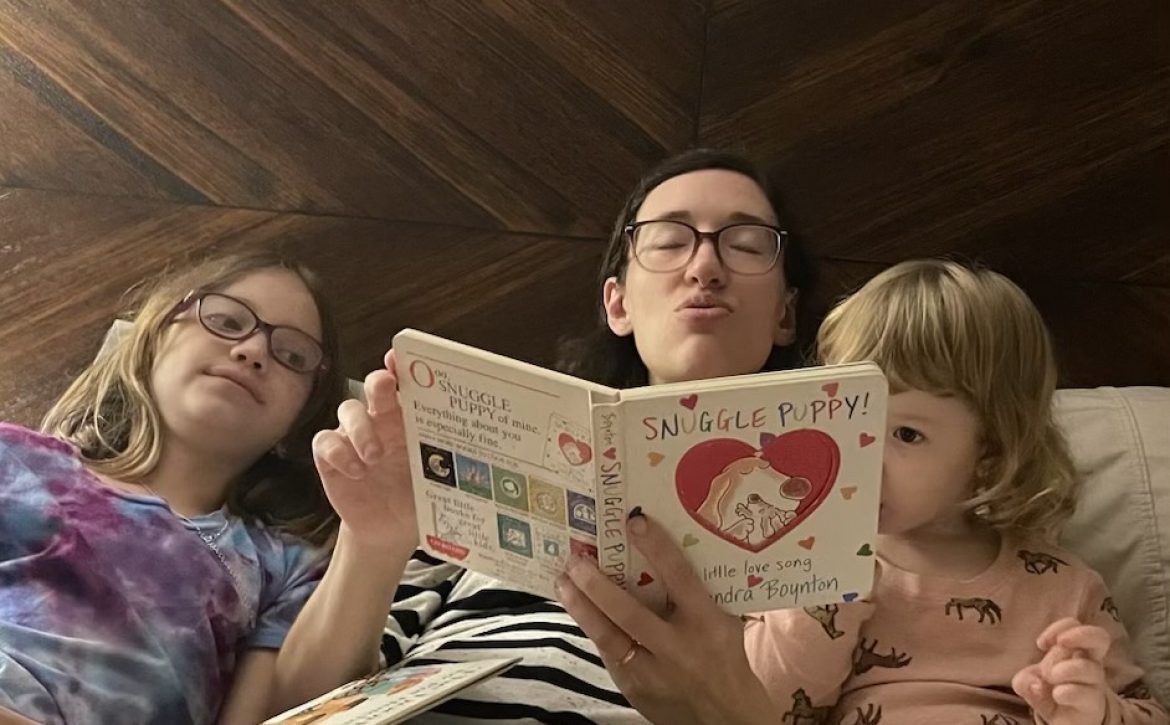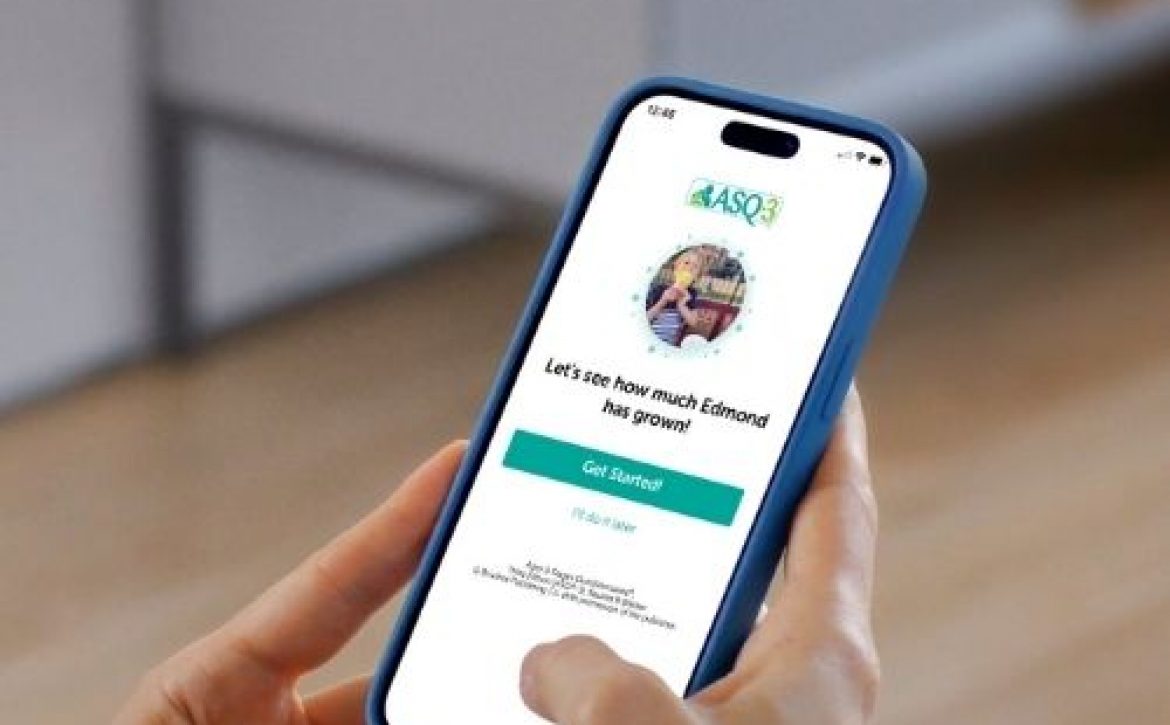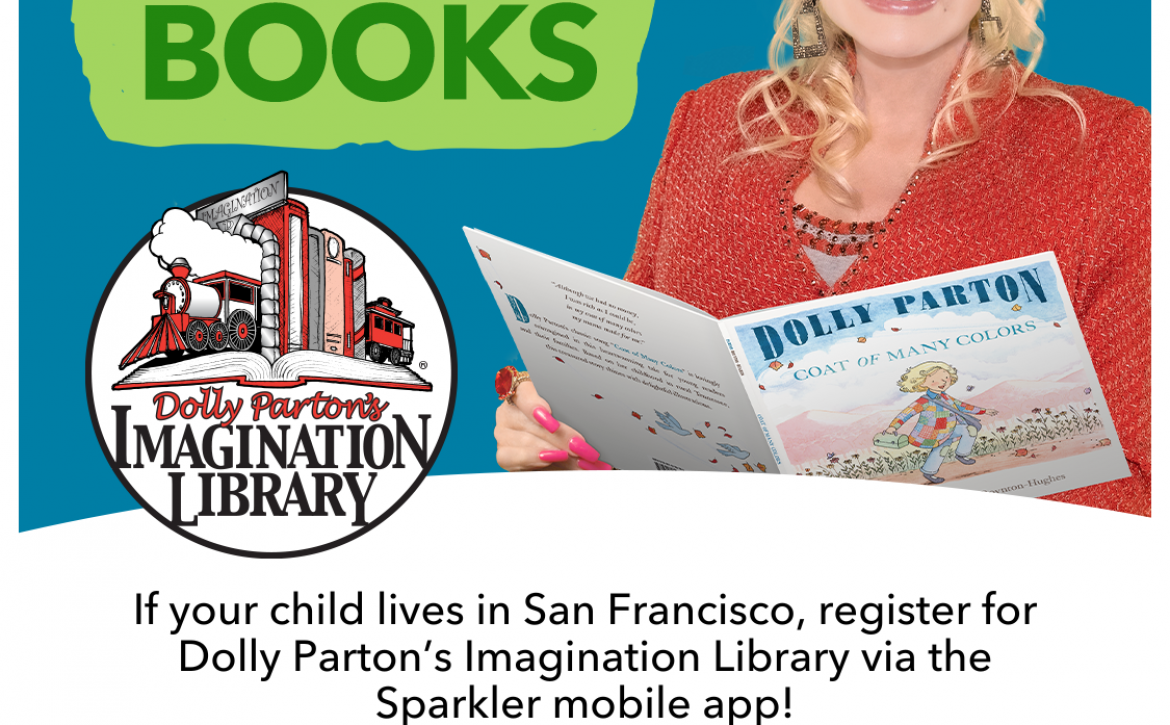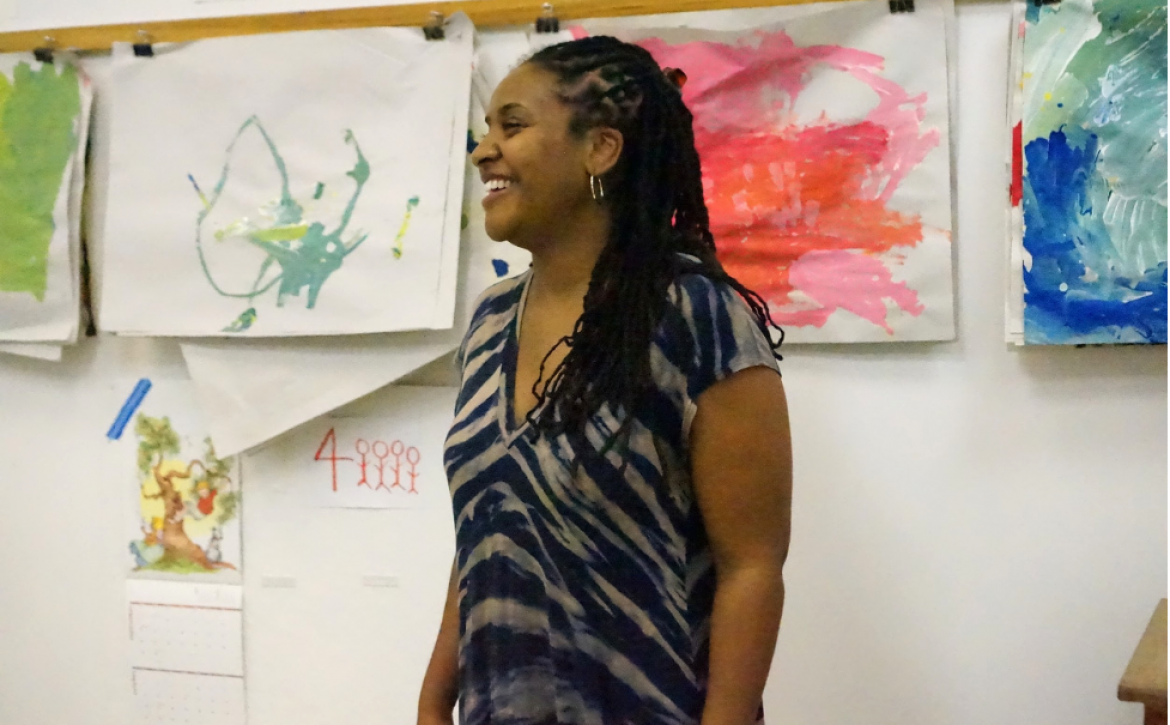Top Plays of 2025

Throughout 2025, Sparkler families played, learned, and earned Sparkles!
As we approach the end of the year, we’re looking back on the most popular play activities of the year, measured by the families who completed activities and pressed “We Did It!” in the app. The top 10 activities included:
10. Little Helper
9, Stop, Drop, and Roll
8. Stop and Smell
7. Where Are You?
6. Read to a Stuffed Friend
5. Allow Me to Introduce Myself
4. Bubbles
3. This Week at Camp Sparkler
2. Read Together
1. Fall Walk
Let’s keep playing, learning, and sparkling together in 2026!
This activity book is designed to help families work with their children to grow stronger hearts, words, minds, and bodies.
Families can play the activities in the book together — and then scan the QR code to record their progress and find related activities in the Sparkler mobile app.
Play along in the app by pressing “We Did It” and adding a photo to grow your memories. Track all you learn together with your child in your Sparkler scrapbook!
Happy winter!
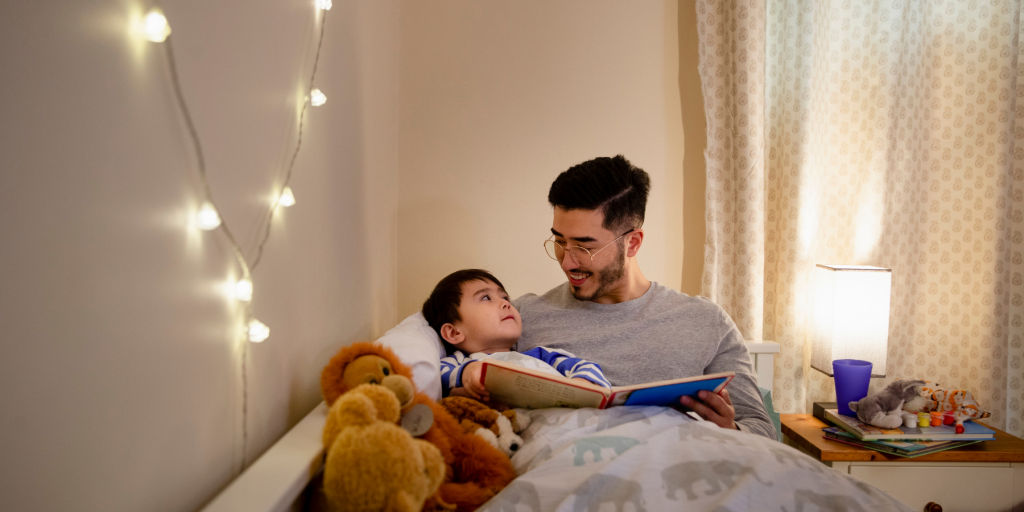
Daily routines — like naps, regular meals, bath time, and reading stories before bed — help children to feel safe and secure. When life follows a familiar rhythm, children know what to expect, which makes the world feel more predictable. This sense of stability supports better behavior, stronger self-control, and the development of important social and emotional skills.
During busy seasons filled with celebrations, gatherings, and special events, routines can easily slip. A missed nap or delayed dinner may seem harmless, especially when children are excited by music, presents, and extra attention. All that excitement can be joyful, but it can also be overwhelming.
Young children may not recognize — or be able to communicate — when they are hungry, overtired, or in need of a break from the action.
Sticking as closely as possible to children’s regular schedule can help prevent meltdowns and tantrums.
By maintaining routines, even during busy times, families can support children in feeling calm, confident, and ready to do their best. This helps the whole enjoy the season more fully!
Fall is full of opportunities to grow children’s hearts, words, minds, and bodies. Sparkler offers dozens of way’s to learn through play with young children this season. Here’s a new activity booklet that families can use to prompt play-based learning this season. We explore pumpkins, apples, pinecones, and more! Find even more in your Sparkler app.

Earlier this year, Sparkler and the CT State Library created CT Ready to Read with Sparkler, a literacy curriculum to use at library storytimes to grow early literacy skills. In this Q&A, Sparkler’s executive director, Julia Levy, chats with Kymberlee Powe, the Children and Young Adult Consultant with the Connecticut State Library, who partnered with Sparkler to create the new curriculum. Kym specializes in youth services and literary equity.
CT Ready to Read with Sparkler is a curriculum based off of the Every Child Ready to Read initiative that was started by the Public Library Association and the Association for Library Services to Children. It’s a tool to help librarians and other folks who operate in the storytime space to embed early literacy skills into storytimes and activities that they are offering for youth and families.
A lot of public librarians love a theme: They love fall, they love colors, they love bears. What started as a joke…became the ultimate theme of the curriculum, and it demonstrates to librarians how they are able to hold true to themes, and still embed early literacy skills like phonemic awareness or vocabulary into their storytime curriculums.
Librarians may fall into the habit of picking the theme, selecting some books that are age-appropriate and fun, and finding a craft that’s age appropriate. Through this process, we might accidentally enforce some of those early literacy skills, but what we want to do is make sure those skills are enforced with intentionality.
Narrative skills are always very interesting to me. I think that’s because — as a child of the 90s — we did a lot of pretend play. Before the time of TikTok and tablets and all of that, there was a lot of pretend play, which really strengthens narrative skills. I just want to see those skills remain as strong in this generation of youth and going forward.
Brown Bear, Brown Bear — it’s a classic.
I’d go with a whole season. We could talk about caterpillars to butterflies, and animals coming out of hibernation and flowers and bugs and dirt. Never gets old!
They can go to the Sparkler website and they can find it there or they can go to the Children and Young Adult Lit Guides at the CT State Library and access it there or reach out to me. It’s a small state, and everyone’s got my email! They can easily begin to make small, incremental changes to their storytimes for higher impact with their children and families.
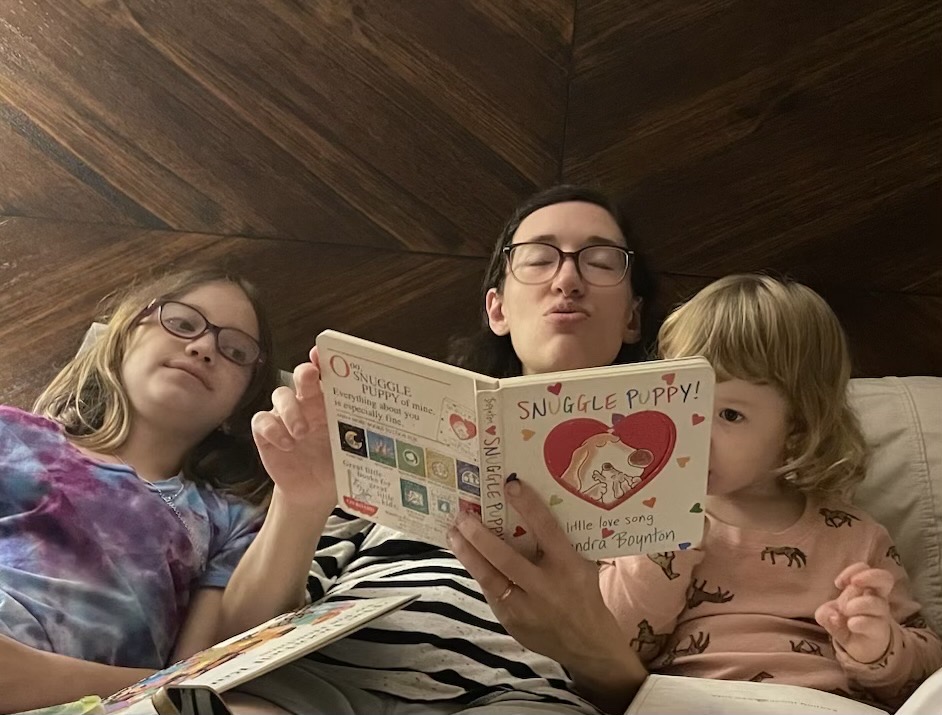
Sparkler chatted with Jordan Dospil, who is a Senior Content Specialist at the National Center for Families Learning (NCFL), where she creates curricula for the early childhood space. She has a background as an early childhood educator. Sparkler worked together with Jordan and the team at NCFL to create Play With Purpose, a playgroup program for families with young children.
I think of play very broadly. For me, play is led by the child, keeps their interest, and it’s FUN.
Yes! Toys can be great, but I think they are completely optional for play. As far as that goes, I think play could even be something that never leaves our heads — that is completely imaginary. My older kids are big daydreamers and that can be a wonderful way to play.
For so many reasons, but the top ones for me are learning and imagining. Imagining is the key to creative problem-solving that we as humans will always need. Aside from that, though, I think it’s essential for us to give kids the time and space to be kids and play is a huge part of that.
My favorite ways to read with young children are to use voices and sound effects and to get them moving during the book. So for sound effects, if a dog is talking in the book I’ll try to make it sound like a dog — barking and howling. If I have wiggly kids, I’ll get them to act out the book — like huffing and puffing to help the wolf blow the house down in “The Three Little Pigs.”
Kitchen supplies are huge — my toddler loves to whisk anything, or use table knives to cut up cheese and things like that. But I think the kind of play we do most involves just ourselves. We play hand games like patty cake or Itsy Bitsy Spider. We pretend that we’re puppies or kittens, or we trade places and she’s the mommy telling me what to do. Last night we were making shadow puppets with our hands.
To me it’s about activating the power of play. You know, kids are learning from us whether we mean them to or not — and they learn through play. I think of the times I’ve seen my kids pretend to go to work like they see me do, or repeat things I say. I’m not trying to teach them those things! But parents really are their child’s first and best teacher. When we can use play meaningfully to teach kids and strengthen our connections with them, that is so powerful.
I think they learn some new ways to talk to families about the value of play and teaching them new tools to engage their children. For a lot of facilitators, it’s also a new way to connect to families in their community, which helps families access resources and support they need even beyond the playgroup.
I was one of those parents! I still sometimes struggle with imaginative play as an adult. My tips:
Interested in learning more about the Play With Purpose program in San Francisco?
Sparkler chatted with Kirsten Carlone, the lead care coordinator at 211 Child Development, who is featured in the new video (above) about the importance of developmental screening and following up with families who complete ASQs. Kirsten’s primary role at 211 Child Development is following up with families who use Sparkler. She also provides outreach and training for families and programs across Connecticut.
Screening is important because potential delays are not always obvious to parents, teachers, or other providers working with families. Screening helps us identify the areas that could use more support, as well as celebrate the areas that are on track.
I support families by helping them understand the screening questions and results. I provide information on developmental milestones and can connect families to free programs in Connecticut, like Birth to Three, Preschool Special Education, and Help Me Grow.
After a family completes a screening, I review the results and the caregiver’s responses. If the responses indicate a score of monitor or refer, or the caregiver wrote in a specific concern, I reach out to the family by phone to discuss it.
If, while speaking with the family, concerns are identified, I will support the family in connecting to programs like Birth to Three, Preschool Special Education, or Help Me Grow. I will also share play activities and parenting tips through the Sparkler app so the family can play together while working on the areas of concern.
The follow-up form is important because it helps providers keep track of follow-ups that are due. It gives providers a place to record their recommendations and other matters discussed during follow-up. Filling out the follow-up form also allows Sparkler to track data. Having this data helps us see what recommendations are being made and how families are being supported by their program across the state.
The follow-up form is similar to the ASQ checklist, but it holds a lot more information. The follow-up form allows providers to record more qualitative data and information on the recommendations given to the family. Providers can look back on past recommendations and can make edits if new recommendations are made.
The “rescreening” question on Sparkler’s follow-up form is useful if the child has scored at “monitor” and we want to check in soon on how the child is progressing after we’ve allowed some time (about 6-8 weeks) to let the family practice skills together. When you pick a date in the future, Sparkler knows to prompt the family — when that date arrives — to redo the screening or complete a new ASQ if the child has aged up into the next interval. This can be helpful in tracking a child’s progress, especially when the child is in an age range where the screening intervals are more spread out.
Play activities in the Sparkler app all correspond with the areas of development in the ASQ. Families can use their results to find activities by looking at the area of concern. For example, if the score is “monitor” in communication, the family can search for activities labeled “Words” in the app. Families can complete activities and collect “Sparkles” in that area of development to practice skills and prepare for the next screening.
The follow-up form helps track a child’s progress because each form is saved within the dashboard. Providers are able to look back on past screenings and the recommendations that were made. This can be especially helpful when reviewing a new screening and providing new recommendations.
Our Care Coordinators are happy to speak with providers to offer guidance and information on the resources available in Connecticut. We often get phone calls and inquiries from providers looking for advice and resources to share with the families they are working with. We also offer training for providers (virtual and in person) and can attend community outreach events. (You can call 1-800-505-7000 to reach a 211 CD Care Coordinator.)
There’s information for families on the Sparkler app and a web page with a lot of useful information that we’ve worked with the team at Sparkler to create. Anyone can call our direct line at 1-800-505-7000 to speak with a Care Coordinator. Our website is also a great resource for providers to learn about available programs and they can request brochures and other materials (for free!). Depending on staff availability, we can provide training on these resources and attend community outreach events.
Children don’t come with manuals! We all have questions about our children’s development: When will she learn to roll over? When will he learn to talk? What can we do to help her get ready to read? How can I help them make friends?
Is your organization ready to kick off your developmental screening program this fall? These resources can help you brush up on how to use Sparkler to screen and follow up the families you serve.
Sparkler offers the mobile Ages & Stages Questionnaires® (ASQ®) — which help families learn about their children’s development during early childhood. The ASQs (which are published by Paul H. Brookes Publishing Co.) draw on parents’ expert knowledge about their children’s learning and development to help families, educators, home visitors, pediatricians, and others to learn about and support children’s development.
The American Academy of Pediatrics (AAP) recommends universal screening for young children. Why?
The first step in the process is inviting families to use Sparkler to complete the ASQ using Sparkler.
Sending Families ASQs: When a family signs up for Sparkler, Sparkler assigns the current ASQs, based on the birthday and prematurity the family shares when signing up. As the child gets older, Sparkler assigns new ASQs and sends families in-app notifications letting them know they’re available. This means programs do not need to identify the correct interval and/or send the ASQ to families.
Inviting Families to Screen: Many programs find that it’s useful to explain screening to families so they understand what it is and why it’s important and to set expectations so that families know when they are expected to fill it out. Some programs want all families to fill out the ASQ at the start of the school year. Others want families to fill out the ASQs at particular moments in their children’s lives (e.g., at 9 months old). Many different approaches work; our only suggestion is to be clear with families so they understand what to do and when to do it.
Once a family completes an ASQ, it’s time for the program to review the results, explain the results to the family, and help the family understand any recommended next steps. Sparkler has created a guide to help programs learn how to follow up after screening. It details the following steps:
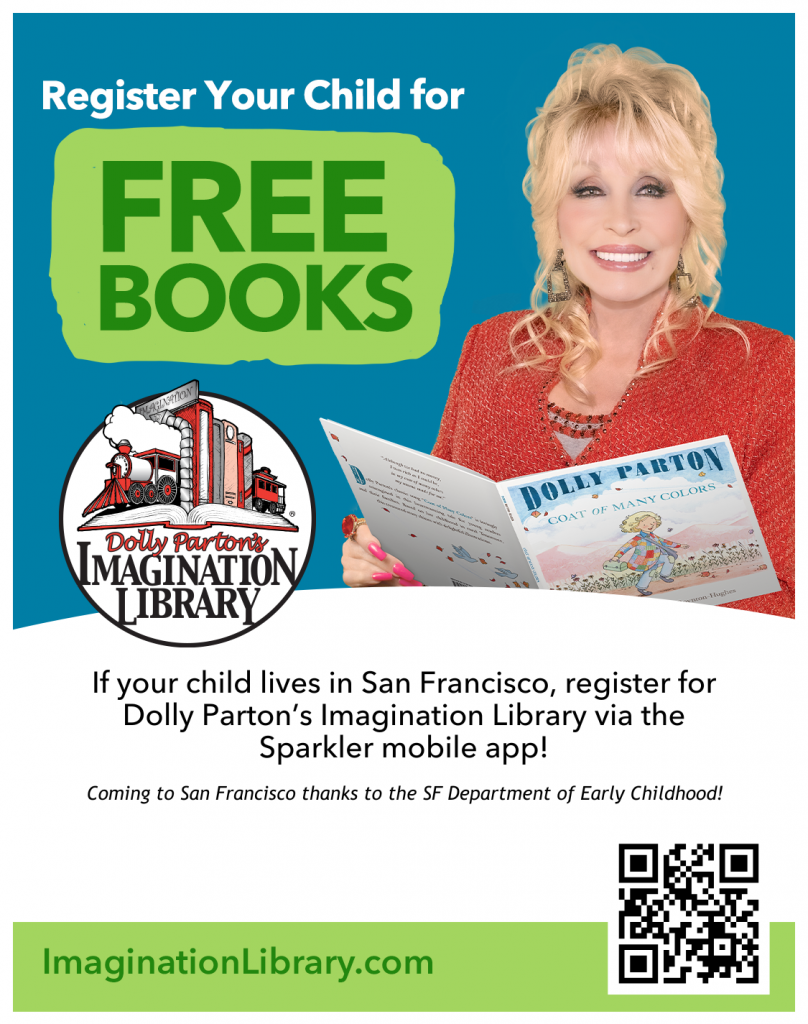
San Francisco families with children 0-5 years old can now get free books for their home libraries from Dolly Parton’s Imagination Library — a program that helps families with young children access age-appropriate, high-quality book each month through early childhood.
San Francisco families can find the sign up form on the Sparkler mobile app. Families who open the app will see a new green tile on the home screen with the Imagination Library logo on it; when they tap it, they’ll open the registration form. Fill it out to start receiving free books in the mail each month.
Families can receive books in English or bilingual English-Spanish. Titles range from classics like “The Rabbit Listened” to new books like “Buffalo Fluffalo.” The books change each year.
Sparkler Learning is the local nonprofit partner working with the SF Department of Early Childhood and the SF Public Library to bring Dolly Parton’s Imagination Library to all San Francisco families with young children.
Since launching in 1995, Dolly Parton’s Imagination Library has become the preeminent early childhood book gifting program in the world. The flagship program of The Dollywood Foundation, a 501(c)(3) non-profit organization, has gifted over 200 million free books in the United States, Canada, United Kingdom, Australia, and Ireland. This is achieved through funding shared by The Dollywood Foundation and Local Program Partners.
The Imagination Library mails more than 2 million high-quality, age-appropriate books each month to enrolled children from birth to age five. The program has been widely researched and results demonstrate the positive impact on early childhood development and literacy skills. Penguin Random House is the exclusive publisher for Dolly Parton’s Imagination Library. For more information, please visit imaginationlibrary.com
Las familias de San Francisco con niños de 0 a 5 años ahora pueden obtener libros gratis para sus bibliotecas domésticas de la Biblioteca de la Imaginación de Dolly Parton, un programa que ayuda a las familias con niños pequeños a acceder mensualmente a libros de alta calidad y apropiados para su edad durante la primera infancia.
Las familias de San Francisco pueden encontrar el formulario de registro en la aplicación móvil Sparkler. Al abrir la aplicación, verán un nuevo recuadro verde en la pantalla de inicio con el logotipo de la Biblioteca de la Imaginación; al tocarlo, se abrirá el formulario de registro. Complételo para empezar a recibir libros gratis por correo cada mes. Las familias pueden recibir libros en inglés o bilingües inglés-español. Los títulos van desde clásicos como “El Conejo Escuchó” hasta libros nuevos como “Buffalo Fluffalo”.
Los libros cambian cada año. Sparkler Learning es la organización local sin fines de lucro que colabora con el Departamento de Primera Infancia de San Francisco y la Biblioteca Pública de San Francisco para llevar la Biblioteca de la Imaginación de Dolly Parton a todas las familias de San Francisco con niños pequeños.
Desde su lanzamiento en 1995, la Biblioteca de la Imaginación de Dolly Parton se ha convertido en el programa de donación de libros para la primera infancia más importante del mundo. El programa insignia de la Fundación Dollywood, una organización sin fines de lucro 501(c)(3), ha donado más de 200 millones de libros gratuitos en Estados Unidos, Canadá, Reino Unido, Australia e Irlanda. Esto se logra gracias a la financiación compartida entre la Fundación Dollywood y los socios locales del programa. La Biblioteca de la Imaginación envía mensualmente más de 2 millones de libros de alta calidad y apropiados para cada edad a niños inscritos, desde el nacimiento hasta los cinco años. El programa ha sido ampliamente investigado y los resultados demuestran su impacto positivo en el desarrollo y la lectoescritura de la primera infancia. Penguin Random House es la editorial exclusiva de la Biblioteca de la Imaginación de Dolly Parton. Para más información, visite imaginationlibrary.com.
旧金山有 0-5 岁儿童的家庭现在可以从多莉·帕顿的想象图书馆免费获得书籍,该计划旨在帮助有幼儿的家庭在幼儿时期每月获得适合其年龄的高质量书籍。
旧金山的家庭可以在 Sparkler 手机应用程序上找到注册表单。打开应用程序的家庭会在主屏幕上看到一个新的绿色磁贴,上面印有 Imagination Library 的标志;点击后,即可打开注册表单。填写后,即可开始每月通过邮件收到免费书籍。
家庭可以收到英文版或英西双语版书籍。书名范围广泛,从《兔子听了》(The Rabbit Listened)等经典作品到《水牛毛毛》(Buffalo Fluffalo)等新书。书籍种类每年都会更新。
书籍每年都会更新。Sparkler Learning 是一家本地非营利组织,与旧金山幼儿教育部和旧金山公共图书馆合作,将多莉·帕顿的“想象图书馆”带给所有旧金山有幼儿的家庭。
自1995年启动以来,多莉·帕顿的“想象图书馆”已成为全球首屈一指的幼儿图书捐赠项目。该项目是多莉坞基金会(一家501(c)(3)非营利组织)的旗舰项目,已在美国、加拿大、英国、澳大利亚和爱尔兰捐赠了超过2亿本免费图书。该项目的资金由多莉坞基金会和当地项目合作伙伴共同承担。“想象图书馆”每月向0至5岁的注册儿童邮寄超过200万本高质量、适龄的图书。该项目经过广泛研究,结果证明了其对儿童早期发展和读写能力的积极影响。企鹅兰登书屋是“多莉·帕顿的想象图书馆”的独家出版商。欲了解更多信息,请访问imaginationlibrary.com
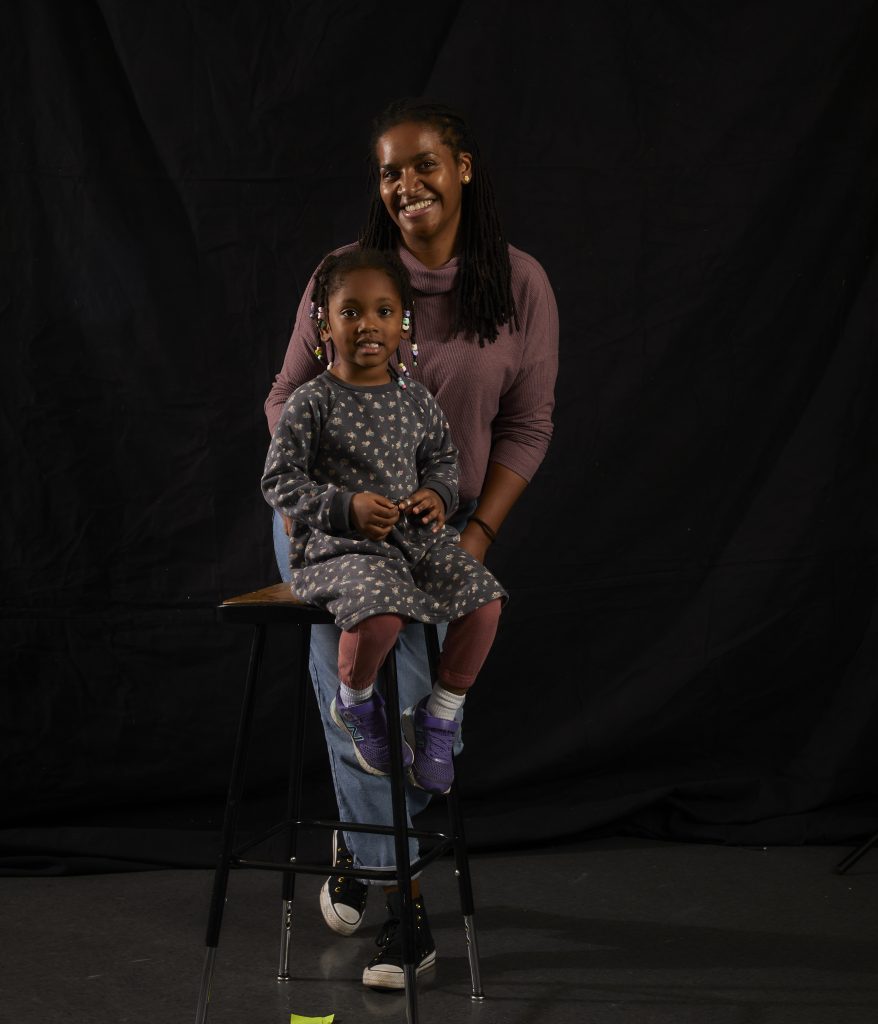
Sparkler’s education director, Dana Stewart, spent a long time as a preschool teacher and school leader. She’s also the mom of two amazing young children.
At Sparkler, Dana creates and maintains the amazing play content and parenting information in the app. She also oversees Camp Sparkler — our summer learning program, which is available for free through the app to all families which children 0-5 years old.
In this Q&A, Dana shares information about summer learning and Camp Sparkler, and what parents/caregivers can do to promote summer learning with young children.
Sparkler: In your experience, is “summer learning loss” real for preschoolers and young children?
Dana: Yes! I remember as a preschool teacher, we spend the whole year building up routines. By the spring, children are so practiced that they know exactly what to do in the classroom. If they go away for two weeks, it’s like they never learned the routines. When we think about summer learning loss, we tend to think about older children and academic learning, but the same principles hold true for toddlers and preschoolers. They’re just learning different things in school.
Sparkler: As a mom and longtime preschool teacher and leader, can babies, toddlers, and preschoolers actually keep learning in the summer months?
Dana: Yes! Learning never stops with young children. I think that’s why it’s especially important for us — as caregivers of young children — to create opportunities for them to practice the skills that we want to promote throughout the year.
Sparkler: Why is the summer actually an important time for learning?
Dana: I think summer offers new opportunities for learning because a lot of us tend to slow down. The hustle bustle of the school year slows; children are less busy. This gives families opportunities to really dig into their children’s interests. We’re also outside more in the summer months, which gives children a chance to explore the natural world freely in a way that is more complicated when it’s colder outside. Summer can be an especially great time to involve children in activities that focus on skills like helping others, being a good friend, or calming down when they’re upset.
Sparkler: Why have you built the Camp Sparkler program around Sparkler’s Little Kids, Big Hearts podcast this summer?
Dana: The podcast is amazing and I’m delighted to be able to shine a light on it with camp this year. Todd Loyd, the podcast host, is a preschool teacher, and he’s so great with the kids featured in each episode. To be able to hear the children’s ideas and experiences — in their own words — makes the podcast engaging for kids. My child and I both enjoy listening — and it helps me, as a mom, to hear how my own child thinks about these big ideas related to our “hearts,” or social and emotional learning.
Sparkler: Sparkler emphasizes play — why is play important in the Camp Sparkler program?
Dana: Play is how children learn best. I think play is how everybody learns best. The physical experience of play is the best teacher. It’s the joyful self-directed practicing of skills that helps to crystalize new information. It generates new ideas and is the birthplace of creativity and ingenuity. The fact that play is FUN is maybe the most important aspect of play. We are motivated to play because it doesn’t feel like a chore. Playing WITH people you love is even better.
Sparkler: People are busy — how much time does a busy parent or caregiver have to spend playing with a child in order to make a difference?
Dana: The good news is that it doesn’t take much time at all. Even five or ten minutes a day can make a huge difference. The best is when you can spend a few minutes playing with your child and then set them up to continue playing, thinking, and processing independently for a few minutes.
Sparkler: What are some of the highlights of Camp Sparkler this year?
Dana: There are SO MANY new play activities, but I am especially excited about all of the music that we’re featuring this year. Benjamin Weiner and Bill English who wrote and performed the songs (along with featured podcast actors) are so great. My own kid loves the songs, and I’m sure others will, too!
Sparkler: This will be your fourth summer leading Sparkler’s summer learning program. What brings you joy about Camp?
Dana: My favorite thing about camp is creating new play activities I’m really excited about and sharing those with families — and seeing their excitement as they play them together.
Sparkler: How can families access Camp Sparkler?
Dana: If a family already has a Sparkler account, they’ll see Camp Sparkler activities on their app home screen on July 7, 2025 through the end of August. If a family doesn’t have a Sparkler account, they should create one, linking up with their local school or program and then they’re all set. (There’s more information here.) Families can start anytime over the summer. It’s okay if they miss the first day or week. If anybody has questions, just reach out to support@playsparkler.org.

